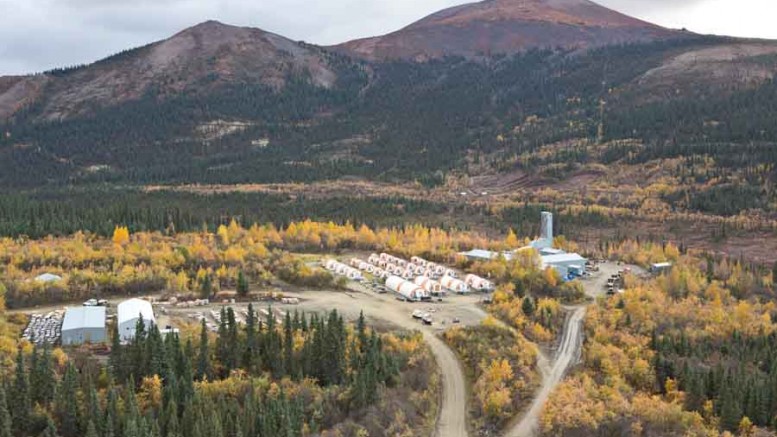VANCOUVER — Alaska did not see new mines commissioned or built in 2012, but an overview of the state’s year in mining and exploration from Avalon Development president Curt Freeman at Roundup 2013 in Vancouver showed that mining and exploration are alive and well.
Alaska is home to seven operating mines, including one coal operation, and there are five projects moving through the state’s permitting process. In terms of production zinc remains the state’s value leader, generating 40% of the state’s mineral-related value. Gold comes in second at 35%, followed by 9% for silver and lead, 4% for peat and 3% for sand and gravel.
Gold production in Alaska has been steadily climbing over the years and reached 935,000 oz. last year. During the gold rush of 1906 Alaska churned out just over 1 million oz. of the yellow metal, so annual output has almost regained that one-time record high.
Despite all that gold, zinc still carries the day in Alaska, and the Red Dog mine is a major reason why. Red Dog is a joint venture betweenTeck Resources (TCK-T, TCK-N) and NANA, a local native corporation, and in the first nine months of 2012 the mine produced 437,000 tonnes of zinc and 62,000 tonnes of lead. With this output, the mine booked net profits of US$352 million for the period.
Red Dog still has many years of defined resources, but there could be much more left to find. The deposits at Red Dog appear as tiny blips on the end of a huge magnetic anomaly, a scenario that prompted Freeman to comment that “the best is probably yet to come from this district.”
Kinross Gold’s (K-T, KGC-N) Fort Knox mine also has lots of life left, as do Hecla Mining’s (HL-N) Greens Creek silver mine, Coeur d’Alene Mines’ (CDM-T, CDE-N) Kensington gold operation, the Pogo gold mine now owned by Sumitomo Metal Mining and Fire River Gold’s (FAU-V) Nixon gold operation.
Exploration expenditures in the state in 2012 couldn’t meet the high bar set in 2011, when companies poured US$365 million into the ground. However, overall exploration spending of US$265 is not too shabby, and as Freeman explained: “Good projects got money, though unfortunately, smaller projects often did not.”
One good project represented almost half of that exploration spending: the Pebble gold project. Freeman described it as “a monster in anybody’s books.” Monster projects demand monster budgets, and Pebble got just that: in 2012, Northern Dynasty Minerals (NDM-T, NAK-X) spent US$107 million at the site. Explorers have drilled more than 1 million metres at Pebble since the first hole in 1988.
Donlin Creek is another monster gold project in Alaska, this one co-owned by NovaGold Resources (NG-T, NG-X) and Barrick Gold (ABX-T, ABX-N). In fact, Donlin’s 43 million oz. make it the biggest undeveloped gold deposit in the world. NovaGold and Barrick completed a final feasibility study in 2012, and took major steps through the permitting process. However, the project is not yet approved.
Other project achievements included Freegold Ventures (FVL-T) increasing the size of the gold deposit at its Golden Summit project by some 250%. “That project earned the distinction of adding the most ounces in one go,” Freeman said.
Freeman earmarked the Tetlin copper-gold project as the best discovery of the year in Alaska. Owned by US-listed Contango ORE, the Tetlin discovery is a story of classic geology: prospecting, sampling, surveying and drilling to produce high gold grades over substantial widths.
NovaCopper (NCQ-T, NCQ-X) also produced some “spectacular results” at its Bornite project, according to Freeman. The company drill tested a new prospect just outside of the main zone at Bornite and produced a slew of high-grade hits, such as 47 metres of 2.7% copper.
Explorers in the state were likely heartened to hear the Alaskan government launch two mining-oriented initiatives in 2012. First, the government is trying to streamline its permitting, with the goal of a one-stop permitting shop. The goal is a ways off, but steps are being taken to simplify the system.
Second, the state government is funding Roads to Resources, a program tasked with building two major roads for mineral explorers and developers. One road will run through the Ambler mine area, and the other will cut across the Central region.


Be the first to comment on "Gold, copper remain Alaska’s best undeveloped assets"